Tag: Tour Plan
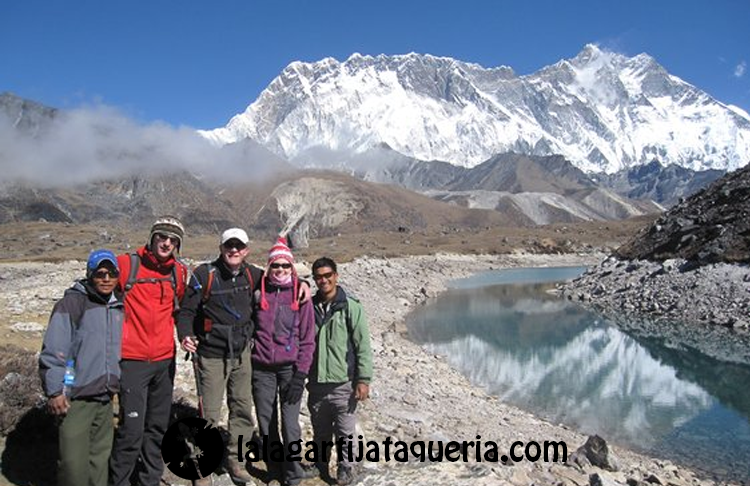
Crafting the Perfect Tour Plan for Nepal Journey
Planning a tour to Nepal is like opening a gateway to breathtaking landscapes, rich cultures, and thrilling adventures. Known for its towering Himalayan peaks, ancient temples, and vibrant festivals, Nepal offers something for every type of traveler. Whether you are an avid trekker, a cultural enthusiast, or someone seeking a spiritual escape, Nepal has all the ingredients for an unforgettable journey.
In this comprehensive guide, we’ll explore essential details to help you create the perfect tour plan for Nepal. From the best times to visit to the must-see festivals, this article aims to prepare you for an extraordinary experience in the heart of the Himalayas.
Introduction to Nepal: A Land of Diversity and Adventure

Nepal is a country that blends the serenity of its majestic mountains with the rich history of ancient cities and diverse cultures. When you craft your tour plan for Nepal, you are opening yourself to a range of activities such as trekking to the Everest Base Camp, exploring the UNESCO World Heritage sites in Kathmandu, and enjoying the tranquility of the lush Chitwan jungles.
Visitors to Nepal can find beauty in both its natural wonders and cultural experiences. Nepal’s landscapes stretch from the towering heights of the Himalayas to the fertile plains of the Terai, while its history and spirituality are woven into the fabric of life through festivals, art, and architecture. Such diversity makes it essential to thoughtfully plan your tour plan for Nepal to make the most of your visit.
Best Time to Visit Nepal
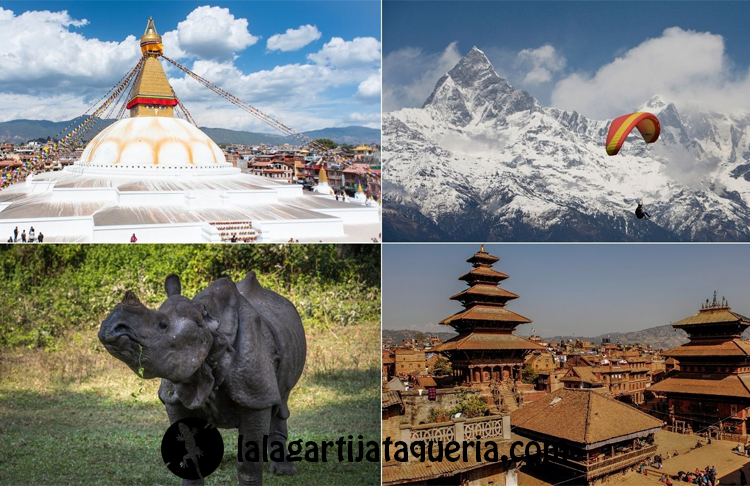
Choosing the best time for your tour plan for Nepal depends on what you aim to experience. The country offers different wonders throughout the year, each season bringing its own unique charm.
Climate and Seasonal Recommendations
Nepal’s climate can be categorized into two primary seasons: the dry season (October to May) and the monsoon season (June to September). If your tour plan for Nepal revolves around trekking or exploring the outdoors, the dry season, particularly autumn (September to November) and spring (March to May), is ideal. During these months, the weather remains clear, offering spectacular views of the mountains and perfect conditions for outdoor activities like trekking and wildlife safaris.
However, if you wish to avoid crowds and explore cities like Kathmandu or Pokhara at a leisurely pace, the winter season (December to February) is also an excellent choice. Although it’s colder, especially in the higher altitudes, you can enjoy quieter trekking trails and picturesque snowy peaks during this time.
Festive Events and Cultural Celebrations
Nepal’s festivals are a vibrant display of its rich cultural heritage. If your tour plan for Nepal aligns with the festival season, you’ll have the opportunity to immerse yourself in the local traditions and celebrations. One of the most significant festivals is Dashain, which takes place between September and October. It’s a 15-day celebration that symbolizes the victory of good over evil, involving various rituals, family gatherings, and feasts.
Another essential festival is Tihar, celebrated in October or November, which is known as the festival of lights. Homes are decorated with oil lamps, and each day is dedicated to different animals like crows, dogs, and cows, highlighting Nepal’s deep spiritual connection with nature.
For travelers interested in traditional processions, Indra Jatra in Kathmandu and Teej for Hindu women in August are other notable events that bring the streets alive with dancing, singing, and rituals.
These highlights are just a glimpse into crafting an extraordinary tour plan for Nepal. Planning around the weather and festivals can enhance your experience, offering the chance to see Nepal at its cultural and scenic best.
Planning Your Itinerary
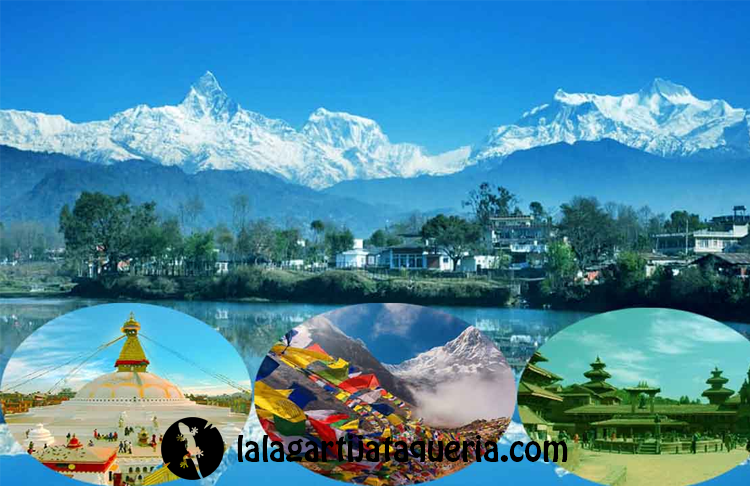
Creating the ideal tour plan for Nepal requires balancing the country’s incredible natural beauty with its rich cultural heritage. A well-rounded itinerary should include visits to iconic historical sites, engaging in thrilling outdoor activities, and exploring Nepal’s unique ecosystems. In this section, we will lay out a 7-day classic Nepal itinerary that gives you a taste of everything: from the bustling streets of Kathmandu, the tranquil beauty of Pokhara, the wildlife of Chitwan, to the spiritual ambiance of Lumbini.
This tour plan for Nepal is perfect for those who want to experience the diverse offerings of the country within a limited time frame, ensuring that you see Nepal’s highlights while maximizing your adventure.
7-Day Classic Nepal Itinerary
For those embarking on a 7-day tour plan for Nepal, we recommend a mix of cultural exploration, adventure activities, and nature tours. Here’s a breakdown of the itinerary to help you get started:
Day 1-2: Kathmandu Valley Exploration
Begin your journey in the vibrant capital, Kathmandu. Explore the UNESCO World Heritage sites in the Kathmandu Valley, including Swayambhunath (Monkey Temple), Pashupatinath Temple, and the Boudhanath Stupa. These ancient sites offer insights into Nepal’s deep spiritual roots in both Hinduism and Buddhism.
- Day 1: Visit Durbar Square, the heart of Kathmandu’s cultural heritage, and marvel at the intricate Newari architecture. End the day with an evening Aarati ceremony at Pashupatinath.
- Day 2: Discover the ancient cities of Patan and Bhaktapur. Patan’s Durbar Square is famous for its historic palaces and art, while Bhaktapur offers a glimpse into medieval Nepal with its well-preserved temples and squares.
Day 3-4: Pokhara and Adventure Activities
On the third day, head to Pokhara, known for its serene lakes and majestic mountain views.
- Day 3: Take an early morning drive to Sarangkot to witness the sunrise over the Himalayas. Spend the rest of the day exploring Phewa Lake, Devi’s Falls, and the Gupteshwor Cave. For adventure lovers, consider paragliding or boating on Phewa Lake.
- Day 4: Engage in more adventurous activities such as zip-lining or ultra-light flights for a closer view of the Annapurna range. Enjoy the calm atmosphere of World Peace Pagoda to wrap up the day.
Day 5-6: Chitwan National Park Safari
After Pokhara, drive to Chitwan National Park, where the lush jungle provides a completely different experience compared to the mountains.
- Day 5: Embark on a jungle safari to spot one-horned rhinoceros, Bengal tigers, and a variety of bird species. You can also enjoy canoeing along the Rapti River to observe crocodiles and birdlife.
- Day 6: Explore more of Chitwan with activities like elephant bathing or visiting local Tharu villages to learn about their indigenous culture.
Day 7: Lumbini – The Birthplace of Buddha
End your tour plan for Nepal with a visit to Lumbini, the birthplace of Buddha.
- Day 7: Explore the Maya Devi Temple, the Ashoka Pillar, and several monasteries built by Buddhist countries around the world. Reflect on the spiritual significance of Lumbini before heading back to Kathmandu for your departure.
This itinerary is designed to give you a taste of Nepal’s cultural diversity, natural beauty, and thrilling adventures, ensuring your tour plan for Nepal is nothing short of unforgettable.
Top Destinations to Visit in Nepal
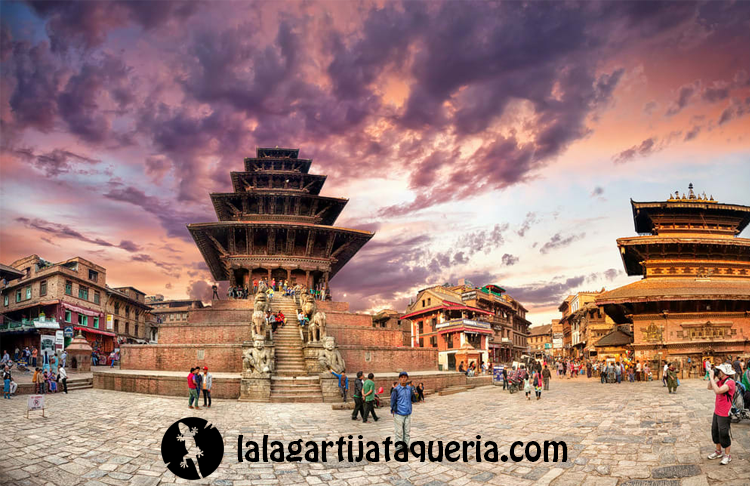
When crafting a tour plan for Nepal, you’ll want to ensure that you experience the unique blend of natural beauty, adventure, and spirituality that this country offers. Nepal is home to four prominent destinations: the historic and cultural city of Kathmandu, the serene landscapes of Pokhara, the diverse wildlife of Chitwan, and the spiritual tranquility of Lumbini. Each of these places provides a different flavor of Nepal, making them essential stops on any itinerary.
Kathmandu: Culture and Heritage
Kathmandu, the vibrant capital of Nepal, is a treasure trove of historical and cultural landmarks. It is home to numerous UNESCO World Heritage Sites, including Durbar Square, Pashupatinath Temple, Swayambhunath Stupa, and Boudhanath Stupa. These ancient monuments reflect the rich history and spiritual traditions of the country.
- Durbar Square offers a glimpse into Nepal’s medieval architecture and is a hub for local festivals and rituals.
- Pashupatinath Temple is one of the holiest Hindu temples, renowned for its sacred cremation rituals and Aarati ceremonies.
- Swayambhunath Stupa, also known as the Monkey Temple, offers panoramic views of the Kathmandu Valley and is a significant Buddhist pilgrimage site.
Pokhara: Adventure and Natural Beauty
Pokhara, often referred to as the gateway to the Annapurna region, is famous for its stunning mountain views, serene lakes, and adventure activities. This city offers a mix of relaxation and thrill for travelers.
- Sarangkot is a popular viewpoint to catch the sunrise over the Annapurna and Dhaulagiri ranges.
- The tranquil Phewa Lake provides an opportunity for boating, with the iconic Taal Barahi Temple sitting on a small island in the middle.
- Pokhara is also known for activities like paragliding, zip-lining, and trekking, making it a must-visit for adventure enthusiasts.
Chitwan: Wildlife and Nature
Chitwan National Park is a haven for nature and wildlife lovers. This UNESCO World Heritage Site offers opportunities to spot rare animals like the one-horned rhinoceros, Bengal tigers, and numerous species of birds.
- Jungle safaris are a highlight in Chitwan, providing a chance to explore dense jungles and observe wildlife up close.
- Canoeing along the Rapti River allows visitors to experience the diverse birdlife and crocodile habitats.
Lumbini: Spiritual Exploration
Lumbini, the birthplace of Lord Buddha, is a significant pilgrimage site for Buddhists worldwide. The peaceful ambiance of Lumbini, combined with its spiritual significance, offers a different dimension to your tour plan for Nepal.
- The Maya Devi Temple marks the exact spot where Buddha was born, and it is surrounded by various monasteries built by Buddhist countries.
- The Ashoka Pillar and Sacred Garden are other key sites in Lumbini, reflecting the region’s historical and religious importance.
These destinations are fundamental to experiencing Nepal’s cultural depth, natural wonders, and spiritual heritage, making them essential components of any well-rounded tour plan for Nepal.
Choosing Your Activities in Nepal
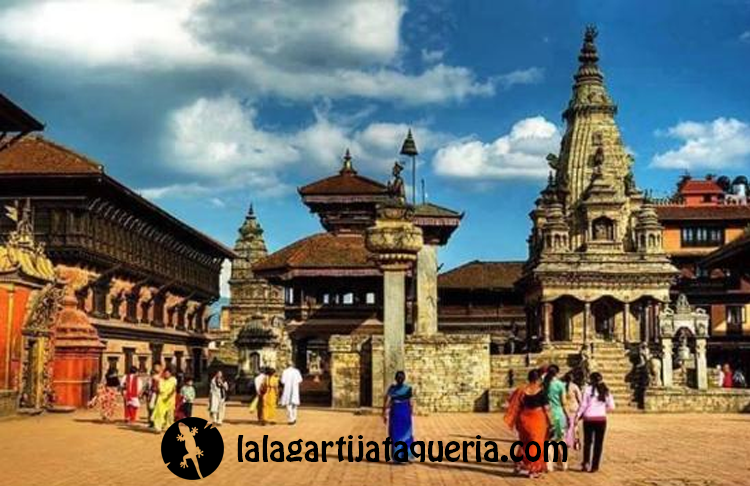
When planning a tour plan for Nepal, it’s essential to include a mix of activities that highlight the country’s natural beauty, adventure opportunities, and rich cultural heritage. From trekking the world-famous Himalayas to engaging in local festivals or trying out exhilarating adventure sports, Nepal offers something for every type of traveler. This guide will help you choose the best activities for your tour plan for Nepal to ensure an unforgettable experience.
Trekking Options
Nepal is a world-renowned trekking destination, home to some of the most famous trails in the world. Whether you’re an experienced trekker or a beginner, Nepal offers a variety of options to suit all levels.
- Everest Base Camp Trek: This iconic trek allows you to stand at the foot of the world’s highest mountain. It’s a challenging journey but rewards trekkers with breathtaking views and an immersive experience in Sherpa culture.
- Annapurna Circuit: A popular choice for its diverse landscapes, this trek takes you through lush forests, arid deserts, and high-altitude passes, offering spectacular mountain views.
- Langtang Valley Trek: For a more serene and less crowded experience, the Langtang Valley offers stunning views of glaciers and peaks, coupled with the opportunity to visit traditional Tamang villages.
Cultural Experiences and City Tours
For those interested in Nepal’s deep cultural roots, city tours and festival experiences provide an incredible glimpse into the country’s history and traditions.
- Kathmandu Valley: Explore the historical and religious landmarks of the capital, including Pashupatinath Temple, Swayambhunath Stupa, and Durbar Square. This is a cultural immersion into Nepal’s rich Hindu and Buddhist traditions.
- Patan and Bhaktapur: These ancient cities, located within the Kathmandu Valley, are known for their stunning architecture and cultural heritage. Both cities offer a more laid-back alternative to the bustling capital, with vibrant artisan markets and intricate temples to explore.
- Festivals: Plan your visit around festivals such as Dashain or Tihar to experience the vibrancy of Nepali culture, where communities come alive with dances, music, and religious ceremonies.
Adventure Sports
Nepal is an adventurer’s paradise, offering a wide range of thrilling outdoor activities set against the backdrop of the majestic Himalayas.
- Paragliding: Experience the exhilaration of flying over Pokhara, with breathtaking views of Phewa Lake and the Annapurna range. Paragliding here is one of the most popular adventure sports in Nepal.
- White-Water Rafting: Nepal’s rivers, such as the Trishuli and Bhote Koshi, provide exciting opportunities for rafting. These rivers range from mild to wild, catering to both beginners and seasoned rafters.
- Bungee Jumping: For adrenaline junkies, try bungee jumping at The Last Resort, near the Nepal-Tibet border, where you can leap from a 160-meter-high platform into a stunning river gorge.
By incorporating these activities into your tour plan for Nepal, you will enjoy a diverse and exciting travel experience, whether you’re seeking cultural enlightenment or adrenaline-pumping adventures.
Transportation and Accommodation in Nepal

Planning your tour plan for Nepal involves not just choosing what to see and do, but also figuring out how to get around and where to stay. Nepal’s diverse landscapes, from the towering Himalayas to lush lowland jungles, mean that transportation and accommodation options vary widely depending on your route and preferences. Whether you’re trekking in the mountains or exploring cultural sites in the cities, understanding how to navigate the country and where to rest is essential for a smooth trip.
How to Get Around Nepal
Transportation in Nepal can range from thrilling to challenging, depending on your destination and mode of travel. The country’s rugged terrain means that road conditions vary greatly, and certain areas are only accessible by flight.
- Domestic Flights: The quickest and most convenient way to travel between major cities like Kathmandu, Pokhara, and Lumbini is by domestic flights. These are ideal for saving time, especially when traveling to remote regions like Lukla for the Everest Base Camp trek. Keep in mind that weather can sometimes cause flight delays or cancellations.
- Buses: For budget travelers, long-distance buses are a common way to get around. Tourist buses with more comfort and safety features operate between major destinations like Kathmandu, Pokhara, and Chitwan. However, local buses, while cheaper, can be crowded and less reliable, especially on rough mountain roads.
- Private Vehicles: Renting a private car or jeep with a driver is another option. This provides flexibility and comfort, particularly when traveling to more remote areas or taking scenic routes through the mountains. While this option is pricier, it’s ideal for those seeking convenience without worrying about bus schedules.
- Taxis and Rickshaws: In cities like Kathmandu and Pokhara, taxis are readily available for short distances. Make sure to negotiate or use a meter. In more crowded areas, rickshaws offer a fun, eco-friendly way to explore local markets and narrow streets.
Accommodation Types
Nepal caters to a wide range of travelers with varied accommodation options, from budget-friendly lodges to luxury hotels. Depending on your itinerary and personal preferences, you’ll find plenty of options to match your tour plan for Nepal.
- Hotels: In cities like Kathmandu, Pokhara, and Chitwan, you’ll find a broad range of hotels, from budget guesthouses to 5-star international hotels. In popular trekking areas like Everest or Annapurna, there are also more basic hotels that cater to trekkers.
- Tea Houses: Along the trekking routes, tea houses are the most common form of accommodation. These are simple lodges that offer basic rooms and meals. While facilities may be modest, tea houses provide a welcoming environment and a chance to interact with fellow trekkers and locals.
- Resorts: For a more relaxing experience, resorts are available near popular nature and adventure destinations, such as Chitwan National Park and Nagarkot. These resorts often provide eco-friendly lodging with additional comforts like guided nature tours, spas, and fine dining.
- Monasteries and Homestays: For a unique cultural experience, you can stay in monasteries or homestays. These offer a chance to connect with local families or monks and gain a deeper understanding of Nepali culture and traditions. Homestays are particularly popular in rural areas, where you can participate in daily village life.
Understanding transportation and accommodation options will enhance your tour plan for Nepal, ensuring you have a comfortable and efficient journey through this incredible country.
Travel Tips and Safety Precautions

Planning your tour plan for Nepal requires more than just choosing your activities and routes. It’s essential to be mindful of health and safety precautions to ensure a smooth and enjoyable trip. Nepal’s rugged terrain, high altitudes, and cultural uniqueness make it an extraordinary destination, but it also requires travelers to be prepared and informed. Below are some essential tips to keep you safe and comfortable throughout your journey.
Health Recommendations and Vaccinations
When traveling to Nepal, it’s important to take health precautions, especially if you’re planning to trek in high altitudes or explore remote regions. Here are some key health recommendations for your tour plan for Nepal:
- Vaccinations: Make sure your routine vaccinations are up to date (such as measles, mumps, and rubella). In addition, you may need vaccines for hepatitis A, typhoid, tetanus, and rabies if you plan to visit rural areas or go trekking. Depending on the season and region, consider vaccination for Japanese encephalitis.
- Altitude Sickness: If you’re trekking above 2,500 meters, altitude sickness is a significant concern. Symptoms include headaches, nausea, and dizziness. To prevent it, acclimatize gradually, stay hydrated, and avoid alcohol. Carry acetazolamide (Diamox), which helps prevent altitude sickness.
- Water and Food Safety: Avoid drinking tap water in Nepal. Stick to bottled water or use water purification tablets. Make sure food is thoroughly cooked, and avoid raw vegetables or fruits that cannot be peeled.
Packing Essentials for Your Nepal Tour
Nepal’s varying climates and terrain require careful packing. Here’s a list of essentials to ensure you’re prepared for all conditions during your tour plan for Nepal:
- Clothing: Pack in layers, especially if you’re trekking. You’ll need warm clothes for cold mornings and evenings, even in summer, and lighter clothing for the warmer afternoons. Bring a waterproof jacket, thermal base layers, and a hat for sun protection.
- Footwear: Comfortable and sturdy trekking boots are essential for any trekking route. Make sure they are well broken in before your trip. Carry a pair of light sandals or shoes for relaxing in cities.
- Trekking Gear: A high-quality backpack, sleeping bag (if trekking), and a headlamp are must-haves. Don’t forget a water bottle with a filter or purification tablets, trekking poles, and a first aid kit.
- Documents and Essentials: Bring copies of your passport, travel insurance, and permits for trekking. Pack extra passport photos as they are often needed for permits and visas. Lastly, bring a universal travel adapter and power bank for your electronics.
Language and Cultural Etiquette
Respecting Nepal’s culture and customs is vital to having a respectful and immersive experience.
- Language: While Nepali is the official language, English is widely spoken in tourist areas. Learning a few basic phrases in Nepali, such as “Namaste” (a respectful greeting) and “Dhanyabad” (thank you), can go a long way.
- Cultural Etiquette: Dress modestly, especially when visiting temples and rural areas. Cover your shoulders and knees, and always remove your shoes before entering a temple or someone’s home. When giving or receiving items, use your right hand or both hands as a sign of respect.
- Religious Sensitivity: Nepal is home to both Hinduism and Buddhism, and visitors should be mindful of religious customs. Don’t point your feet towards religious icons, and always ask for permission before taking photos at sacred sites.
Conclusion: Crafting Your Perfect Nepal Tour Plan
Crafting the perfect tour plan for Nepal involves balancing adventure with cultural immersion while being mindful of the country’s health and safety guidelines. Whether you’re trekking through the Himalayas, exploring ancient temples in Kathmandu, or immersing yourself in local festivals, proper preparation is key to an enjoyable and memorable trip. By following these travel tips, you’ll be well-equipped for an enriching experience in this diverse and breathtaking destination.